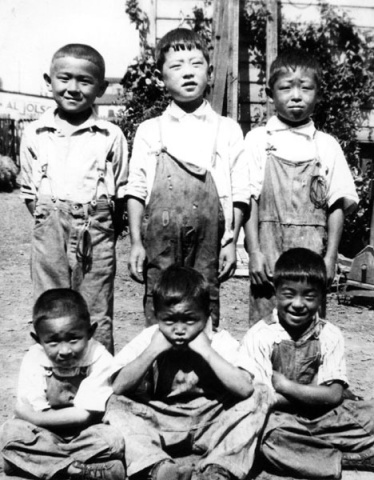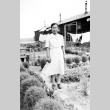PARTNER
Densho
Visit partner
COLLECTION ID
ddr-densho-23
DESCRIPTION
The Tazuma collection, 1917-1950s, focuses on the Tazuma family, owners of a store in Seattle's Nihonmachi. This collection contains photographs of the family, their store, and recreational activities such as football and judo. There are also several views of the family at the Minidoka concentration camp, Idaho. Documents include Bunshiro Tazuma's immigration papers and the Tazumas' naturalization certificates. Densho interviewed collection donor Elmer Tazuma in 1998.
INCLUSIVE UNIT DATE
1917-1954
BULK UNIT DATE
1917-1954
PHYSICAL DESCRIPTION
6 photographic prints, black and white; 6 documents
CONTRIBUTOR
Densho
CREATORS
PREFERRED CITATION
Courtesy of the Tazuma Family Collection
RIGHTS
Copyright restricted
12 Objects
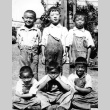
img
Children from Nihonmachi (ddr-densho-23-1)
Six neighborhood boys pose for photographer Elmer Tazuma. Front (left to right): Tsuji Yoshihara, Tadao Shibuya, and Junkichi Tazuma. Back: Nobi Tazuma, Frank Takano, and Takeshi Shibuya.

img
Two brothers on an outing (ddr-densho-23-2)
Yukio Tazuma (left) and his older brother Nobi enjoy a day of exploring.
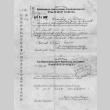
doc
Japanese passport (ddr-densho-23-5)
English and French translations of the Japanese passport belonging to Bunshiro Tazuma. The Issei, mostly young Japanese males, began immigrating to the United States in the late 1800s. Many were farmers or students with dreams of returning to Japan after making their fortunes in America. The vast majority never realized this dream.

doc
Alien certificate of identification (ddr-densho-23-8)
After the bombing of Pearl Harbor on December 7, 1941, Issei were required to carry identification documents because of their alien status. (Issei were barred from becoming naturalized citizens until 1952.) This document belonged to Bunshiro Tazuma, a permanent resident of Seattle since 1917. The identification certificate was the same size as an American passport and …
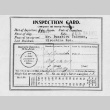
doc
Immigrant inspection card (ddr-densho-23-12)
Immigrants were required by the Immigration and Naturalization Service to carry an inspection card. During their voyage from Japan, Issei were checked daily to ensure that they were not carrying communicable diseases (see bottom portion of first page). Information from the card indicates that the steamship voyage from Japan took approximately eighteen days. This card belonged …
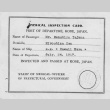
doc
Medical inspection card (ddr-densho-23-14)
Bunshiro Tazuma was a longtime Seattle resident and the owner of the Tazuma Ten-Cent Store in Seattle's Nihonmachi. In 1917, he immigrated to Seattle and became a permanent resident. (From 1908 to 1914, he had worked in Montana.) The Issei were required to carry medical inspection cards in conjunction with several other documents to show that …
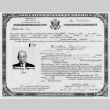
doc
Naturalization certificate (ddr-densho-23-15)
Certificate of naturalization for Bunshiro Tazuma, aged seventy. The landmark case Ozawa v. United States (United States Supreme Court, 1922) barred the Issei from becoming American citizens even though many had been permanent residents since the late 1800s. In 1952, the Immigration and Nationality Act was passed, and the Issei were finally allowed to become citizens.
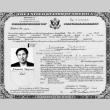
doc
Naturalization certificate (ddr-densho-23-16)
Sawano Tazuma and her husband Bunshiro operated the Tazuma Ten-Cent Store at 12th Avenue and Jackson Street in Seattle's Nihonmachi. The Tazumas were not allowed to become naturalized American citizens until 1952, when the Immigration and Nationality Act was passed. Sawano finally became a citizen in 1954 at the age of fifty-eight, thirty-five years after settling …
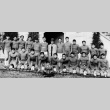
img
Football team (ddr-densho-23-17)
Organized sports such as baseball and football were important for the Japanese American community because they encouraged cohesiveness. Teams composed entirely of Nisei competed against one another. Several Nisei sports leagues were formed in the 1930s. Front (left to right): Torazo Hikida, Ken Shimbo, George Ishii, Jackson Sonada, Genji Nishimura (holding football), "Nap" Nishisaka, Fred Kosaka, …
